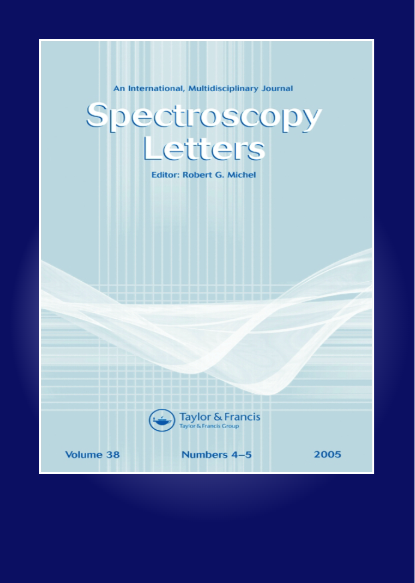结合预处理和分类的拉曼光谱模型在肺癌诊断中的优化策略
IF 1.6
4区 化学
Q3 SPECTROSCOPY
引用次数: 0
摘要
基于拉曼光谱的生物样品数据分析包括应用相关的化学计量学预处理和建立统计模型。本文采用遗传算法和流水线技术,研究了76例健康人血清拉曼光谱和84例肺癌患者血清拉曼光谱的预处理步骤和序列,并对不同的数据分析模型进行了分析。本研究使用的模型包括支持向量机(线性核和非线性核)、多层感知机和偏最小二乘判别分析。结果表明,不同模型的预处理步骤和顺序不是一成不变的。通过执行时间和优化结果对优化后的管道进行评价。研究结果表明,遗传算法可以优化预处理策略和分类模型的流水线,提高数据分析精度,支持向量机模型更适合我们的肺癌血清数据分类。本文章由计算机程序翻译,如有差异,请以英文原文为准。
Optimizing strategies of Raman spectra model combining pre-processing and classification for diagnosis of lung cancer
Abstract The analysis of biological sample data based on Raman spectroscopy involves applying the relevant chemometrics pre-processing and creating the statistical model. In this work, genetic algorithms and pipelines were used to study the steps and sequences of the pre-processing for human blood serum Raman spectra form 76 healthy individuals and 84 lung cancer patients for different data analysis models. The models used in this study include support vector machine (linear kernel and nonlinear kernel), multilayer perceptron, and partial least squares discriminant analysis. The results show that the steps and sequence of pre-processing are not immutable for different models. These optimized pipelines are evaluated by execution time and optimization results. The conclusions are that genetic algorithms can optimize the pipeline of pre-processing strategies and classification models to improve data analysis accuracy, and support vector machine models are more suitable for the classification of our lung cancer serum data.
求助全文
通过发布文献求助,成功后即可免费获取论文全文。
去求助
来源期刊

Spectroscopy Letters
物理-光谱学
CiteScore
2.90
自引率
5.90%
发文量
50
审稿时长
1.3 months
期刊介绍:
Spectroscopy Letters provides vital coverage of all types of spectroscopy across all the disciplines where they are used—including novel work in fundamental spectroscopy, applications, diagnostics and instrumentation. The audience is intended to be all practicing spectroscopists across all scientific (and some engineering) disciplines, including: physics, chemistry, biology, instrumentation science, and pharmaceutical science.
 求助内容:
求助内容: 应助结果提醒方式:
应助结果提醒方式:


